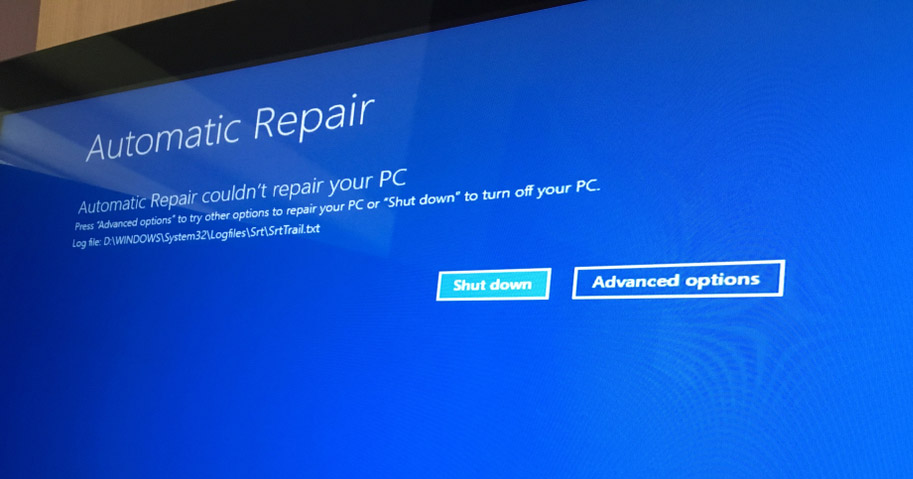Windows 10 update sending PCs into endless boot cycle: What to do
Round and round and round we go with Windows 10

The most recent Patch Tuesday updates from Microsoft seem to be putting some Windows 10 PCs in a boot loop — and we can confirm that it's real, because it happened to us.
The eagle eyes over at Windows Latest spotted several threads on Reddit, Microsoft's forums, and other discussion boards in which Windows users complained of PCs going into Automatic Repair mode after installing the Jan. 12 updates.
- Look out: This browser link will crash your Windows 10 PC
- The best antivirus software to protect your PC
- Plus: Data breach at Bonobos hits 7 million customers: What to do
"I got a 'Automatic Repair' bootloop issue with this update on Lenovo T14 AMD," wrote Reddit user Numitron last week. "Immediate boot failure and reset without any BSOD or any other error. It just boot[s] me into the recovery environment after failing the last boot."
"I woke up to my laptop working in automatic repair mode this morning, and it [was] telling me that automatic repair could not fix whatever issue occurred," wrote Microsoft Answers commenter KnightTime71 on Jan. 13.
"I went to Advanced Options to see about going to a Restore Point, and the most recent was this morning at ~12:30AM for Windows Update. However, it says it cannot restore because of disk corruption," KnightTime71 added. "It seems that Windows Update has FUBARed my laptop."
Our own experience with this bug
This isn't just conjecture. It happened on one of our own Windows laptops the other day, a 2018 Dell Latitude 5490 running Windows 10 version 20H2.
For a different story, we had triggered what would normally be a harmless Blue Screen of Death (BSOD) crash by typing in a specific file path into a browser address bar. (Yes, we should have done this in a virtual machine.)
Sign up to get the BEST of Tom's Guide direct to your inbox.
Get instant access to breaking news, the hottest reviews, great deals and helpful tips.
The Dell laptop, which had not been powered on for a couple of weeks beforehand, rebooted normally. We triggered the bluescreen a couple of more times (research!) and then left the laptop running happily. We're not sure if the January updates were installed or not.
Our IT department messaged us that we needed to reboot the laptop again per request of the corporate antivirus software. We did so, and the machine has been stuck in Automatic Repair mode ever since.
None of the usual quick-repair options have worked, including booting from a Windows installation USB drive or using Safe Mode. We're kind of stuck.
It's possible that the BSOD error we were playing with earlier is the true source of our woes, but this new issue makes a lot more sense. (We finally did spin up a VM to test the BSOD error and couldn't replicate the Automatic Repair issue.)
A possible solution
We've learned that Microsoft is aware of the issue and will provide updates for impacted devices as soon as possible.
Meanwhile, Reddit user Numitron said they were able to fix the issue by running the Deployment Image Servicing and Management (DISM) tool to manually roll back the January updates using this command:
dism /Image:C:\ /Cleanup-Image /RevertPendingActions
Other users, however, said that didn't work for them. Numitron recommended trying the command "sfc /scannow" first in those cases.
It won't work for us until we can convince an IT technician to give us the password to an administrative account.
Update: Simple fix that worked
As stated above, we weren't able to do much on our machine due to the lack of admin credentials. We took it into our IT department, where our technician Ileana first tried "sfc /scannow" on the machine and got nothing.
She was able to access a system restore point from a couple of weeks ago, which we hadn't been able to access for some reason. Because we'd barely used the machine between then and now, we wouldn't be losing much if we erased the previous two weeks. So Ileana rolled it back to that point and all was well.
Rolling back your system, however, should be used as a last resort if you've created or acquired a lot of valuable data since the latest accessible restore point. It might be worth trying the DISM command above first.
Paul Wagenseil is a senior editor at Tom's Guide focused on security and privacy. He has also been a dishwasher, fry cook, long-haul driver, code monkey and video editor. He's been rooting around in the information-security space for more than 15 years at FoxNews.com, SecurityNewsDaily, TechNewsDaily and Tom's Guide, has presented talks at the ShmooCon, DerbyCon and BSides Las Vegas hacker conferences, shown up in random TV news spots and even moderated a panel discussion at the CEDIA home-technology conference. You can follow his rants on Twitter at @snd_wagenseil.

